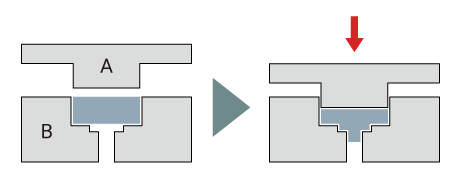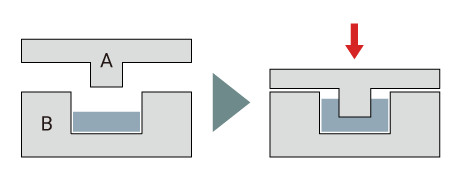Forging
1. Overview and Characteristics
Forging is a type of plastic forming. Blows are delivered to workpieces using a hammer or other tool in order to shape them into the desired form. The materials become stronger than when cast or processed with powder metallurgy, giving them the characteristic of being shock-resistant (toughness).
Forging is used to manufacture products such as tools, cutlery, and parts for automobiles and railroad use. One peculiar use of forging is in the manufacturing of golf drivers, so that they withstand the impact of strokes.
2. Process Types
Forging is classified into two types depending on the temperature used during the process: cold forging and hot forging. Hot forging is a technique where the workpiece is heated and then struck into the desired shape. By striking the workpiece at temperatures above the recrystallization temperature, gas inside the material is forced out, refining the grain structure during recrystallization, making it stronger. On the other hand, cold forging is a way to shape the material by striking it under ambient temperatures. Cold forging features high processing precision and increased toughness.
Forging can be divided into two types: free forging, which does not use dies, and die forging, which can mass-produce the same product using dies.
Other deformation processes include upsetting, where the ends of wire rods are set into cavities to manufacture bolts, and extrusion for manufacturing cylindrical products and tubes.
- Upsetting

- Extrusion (forward extrusion)

- Extrusion (backward extrusion)

- A
- Punch
- B
- Die



